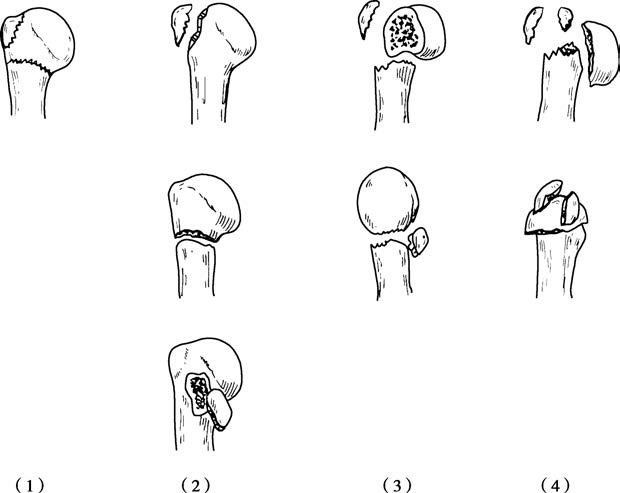Anatomical Overview
The proximal humerus includes three key anatomical regions: the greater tuberosity, the lesser tuberosity, and the surgical neck. The surgical neck represents the transition point where the greater and lesser tuberosities merge into the humeral shaft. It is the junction between cancellous bone and cortical bone and is particularly susceptible to fractures. In the area just below the anatomical neck, the brachial plexus and axillary vessels pass anteriorly, creating the potential risk of neurovascular injury during fractures.
Causes and Classification
Fractures of the proximal humerus can occur at any age, but they are more common in middle-aged and elderly individuals. These fractures are often caused by indirect forces. Depending on the magnitude and direction of these forces, the position of the limb, and the bone quality of the individual, different types of fractures may occur.
The Neer classification is one of the most commonly used systems for categorizing proximal humerus fractures. This classification is based on the anatomical regions involved and the degree of displacement of the fracture fragments. It defines four anatomical segments of the proximal humerus (the humeral head, greater tuberosity, lesser tuberosity, and humeral shaft) and uses displacement criteria (displacement greater than 1 cm or angulation exceeding 45°) to classify the fractures. It outlines four types: one-part, two-part, three-part, and four-part fractures.

Figure 1 Neer classification of proximal humerus fractures
(1) One-part fracture
(2) Two-part fracture
(3) Three-part fracture
(4) Four-part fracture
One-Part Fracture
Regardless of the number of fracture lines, if the displacement criteria described above are not met, the fracture retains some soft tissue attachment and exhibits stability. Such fractures are categorized as one-part fractures, which may also be referred to as non-displaced or minimally displaced fractures.
Two-Part Fracture
A fracture involving one segment with displacement is classified as a two-part fracture. This category includes four forms: fracture of the anatomical neck, fracture of the greater tuberosity, fracture of the lesser tuberosity, or fracture of the surgical neck.
Three-Part Fracture
If two of the four anatomical regions sustain fractures with displacement, it is classified as a three-part fracture. Two common patterns include:
- Fracture of the greater tuberosity and the surgical neck.
- Fracture of the lesser tuberosity and the surgical neck.
Four-Part Fracture
Fractures involving all four anatomical regions with displacement result in four-part fractures. These fractures create four separate bone fragments, and the humeral head becomes dislocated and floats freely. Severe disruption of the blood supply significantly increases the risk of avascular necrosis.
Diagnosis
Diagnosis can be established based on a history of traumatic injury and imaging studies, including X-rays and CT scans (with three-dimensional reconstruction). Shoulder joint X-rays should include not only anteroposterior images but also axial views.
Treatment
Treatment options vary depending on the fracture type, degree of displacement, and other factors and include conservative treatment or open reduction with internal fixation (ORIF).
Conservative Treatment
For non-displaced proximal humerus fractures, immobilization with a triangular sling is sufficient for 3–4 weeks. When follow-up X-rays show evidence of bone healing, rehabilitation exercises to restore shoulder function can be initiated.
For two-part fractures with mild displacement, particularly in patients with low functional demands, the same conservative method may be employed. Function should be restored gradually after radiographs confirm bone healing.
Surgical Treatment
Most displaced proximal humerus fractures require timely open reduction with internal fixation (ORIF). A majority of patients can achieve satisfactory functional recovery following this procedure. For three-part and four-part fractures, ORIF using plates is generally recommended. In particularly complex cases, such as four-part fractures in elderly patients, humeral head replacement (hemiarthroplasty) may be considered as an alternative treatment method.